
Interview : SwAF Viggen Pilot Interview
|
Patrik Sebek interviewed Swedish Air Force Captain Mikael 'BUTCHER' Tormalm of 211 Squadron on behalf of MILAVIA. Captain Mikael Tormalm had flown various Saab Viggen variants, including the Jaktviggen (Fighterviggen) before transitioning to its replacement, the Saab Gripen. |
|
|
1. What is your opinion about the Viggen compared to other fighters from the same era? For example the Tornado, F-15 Eagle, Mig-29 and so on. Well... Not an easy question to answer. The air-to-air combat arena is very complex and involves factors like; how many are you? Distance? Weapons carried by both the opponent and your own group, etc. Itís not as easy as to say that whoever turns best comes out on top. But to give some kind of answer would be that I, having a choice, would not go into a dogfight with the Fighterviggen versus the F-15 or the MiG-29. Tornado Yes. Basically based on rate-of-turn performance. On the other hand I would consider to face both the F-15, MiG-29 and Tornado if I had enough distance at setup, flying with a wingman who knows what he is doing and my sensors gave me good situation awareness. 2. What makes Viggen such a charming fighter, is there more to it then just brute force? I would say that the looks and the sound of the aircraft make a big part of the charm. But for the pilot thereís more to it than that. The Fighterviggen was an aircraft that you could really rely upon when flying and felt kind of like an extension of your body and mind. Meaning that you could forget about the aircraft itself, and totally focus on your situation and status in the air. Iím talking about the Fighterviggen now. The AJS37 was another deal... 3. Viggen is supposed to be a defensive fighter, not able to engage in close dogfights. How does that affect the way you fly the plane when training dogfights? Again, it all depends on the opponent and situation. If you as an example met a F-16 with full armament and external fuel tanks while being light yourself, the difference in performance is close to zero. So you always consider status before entering dogfight. If you find the picture not in favour, we train to engage while keeping distance, avoiding dogfight or outnumber the opponent. Basic fighter tactics since forever. |
|
|
4. You have flown most of the Viggen versions, how do they differ performance wise?
The difference between old recce/attack/EW and the fighter version is tremendous.
Letís break it down to just engine and manoeuvrability to limit the answer some.
|
|
|
5. The RM8B from Volvo Flygmotor is a powerful engine, how sensitive is it? How did you have to treat it once your in the air? Not sensitive at all in normal flying, as shows partly in previous answer. I know only one guy who had a minor engine stall after passing jet-wash. You had to watch yourself though while flying at extreme high altitudes for the A/C envelope. You could end up in a high temperature stall, which you normally cured by shutting down the engine and restart it a few thousand meters below! 6. Since we all know that Viggen means raw power, why don't you tease us with describing how it feels to travel from cruise speed to when you engage full afterburners?
Well, some sorties I still remember. Especially flying at supersonic speed at low level.
We used to fly at 300 meters above the bay of Bothnia at Mach 0.90, and after picking up radar
contact with hostiles started to accelerate.
|
|
|
7. The JA37 version had an automatic cannon, supposed to steer the aircraft for you once its locked on to the target so that every round hit its target. Does it really? And if yes, how much control does the aircraft have during this moment? It does work. In fact it works extremely well. It often replaced the Sidewinder as weapon of choice because of its 360 degrees capability and explosive force. The aircraft is in control of yaw and pitch. You just make sure to keep the proper roll angle. The aircraft is pretty brutal in its attempts to keep the alignment, so motion sickness was actually a common outcome for some pilots after a sortie! 8. According to several magazines, Viggen could have been updated/modified and carried on for 20 more years. Instead the airforce opted to buy the Gripen. Do you think this is a correct decision and why? Well, yes I think it is a correct decision. Keep in mind that the potential of the Gripen is better than for the Viggen. The Fighterviggen was at the end a formidable fighting machine with its data-link, AMRAAM capability and integrated jamming systems. But it could not outmanoeuvre a modern light-weight fighter in close combat. And you have to be able to do all these things. The cost to integrate AA-refuelling and a modern even more powerful engine to the Viggen must be huge. Remember that the Viggen is a heavy aircraft, and weight costs money. So... even though I always loved the fighterviggen it is time for the Gripen to carry the legacy of the Viggen into the future! 9. Viggen has its unique thrust reverser but the Gripen lacks such a system. Why do you think they choose to go this way? Which one do you prefer from a pilots point of view? Actually, the Gripen uses its wheel brakes combined with rudders to create high friction towards the surface. Reason for this is that the reverser-system is very heavy and is seldom used. So, you carry along a lot of weight for little use. On the other hand, you could land a Viggen at short runways on ice and snow conditions. Not too easy with the Gripen, which requires good runway conditions. But then again! We do not use short strips anymore, with our new tasks to be interoperable to NATO /EU, so the answer to what system to prefer would be the system that Gripen has got. It's more weight efficient. |
|
|
10. In Sweden, during some exercises the air force used our main roads as small bases for refuelling/rearming the Viggen and now Gripen. I have heard that some pilots compare it with carrier landings. Have you ever landed a Viggen on a regular road? If you have, how much harder is it compared to landing on a runway? To compare it to carrier landing is in my opinion a little exaggerated! After all, the runway is 800 meters and doesnít move! I have landed on short runways many times, and it is a business that requires some concentration. You need to be fast and precise, because every second you wait with brakes or power the aircraft eats runway. Especially the winter landings were a thrill. To force down 14 tons into a white little strip in 250 km/h seems just... wrong. 11. One thing caused more tragic accidents with the Viggen then any other: The low level flying. To make it clear for our readers, several variables have to meet before any pilot crashes at low altitude. But is it easy as a pilot to loose your bearings in general, or is this common when you fly the Viggen at low altitude?
Low level is a risky business no matter what aircraft you fly. Especially over sea and in
winter conditions, where low contrast often is the reason for accidents. The Viggen had
extreme low level tactics with the recce and attack versions, so that explains the number of
accidents to some extent. But the major reason for low level accidents was the recce/attack-verion's
lack of warning systems. You had no audio/visual warning system when you were about to hit the surface.
The Fighter version did have such a system, and to my knowledge never had a CFIT.
(Controlled Flight Into Terrain)
12. Have you ever had a 'close call' of any kind? If you fly fighters long enough, sooner or later you will have close calls. Itís part of the job unfortunately. I had my share in both Viggen and other aircraft, but they could have happened in any type of aircraft, so Iím just glad that it was some time ago and hopefully will not happen again in the near future. |
|
|
13. The new generation fighters can cause some pilots to suffer from 'information overload'. Have you had any experience of this syndrome? How do you think the pilots situation awareness gets affected in the Gripen compared to the Viggen with all this new information to process?
A pilot can only handle a certain amount of information, that is true. You would be surprised
how little sometimes!
A big thank you from me and MILAVIA.net for taking your time to answer our questions. We wish you all the luck and safe flights. | |
|
If you have any questions regarding the Saab Viggen or Gripen for Capt. Mikael Tormalm, please contact Patrik Sebek and we will pass on your question to him. Capt. Mikael Tormalm provided these answers on a strictly personal basis, based on his experience and views. They do not neccessarily reflect those of the Swedish Ministry of Defence nor those of the Swedish Air Force. All photos by Capt. Mikael Tormalm, depicting the Saab JA 37DI Jaktviggen. |
|
Last Modified: 1 April 2013

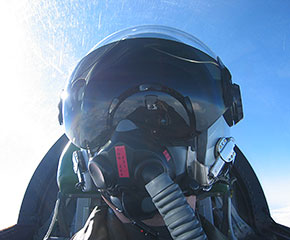
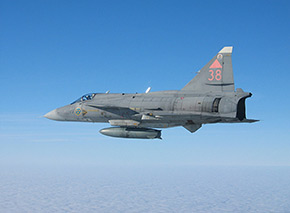
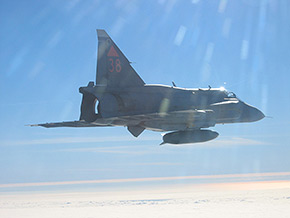
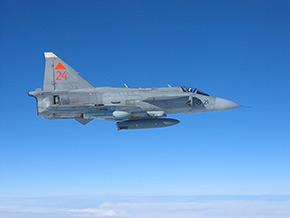
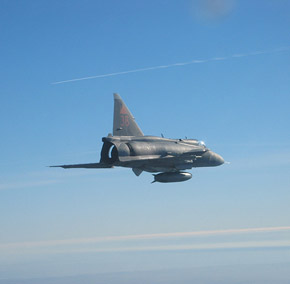
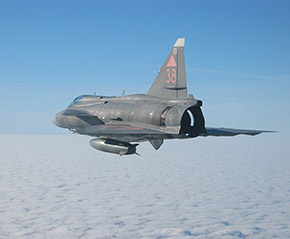
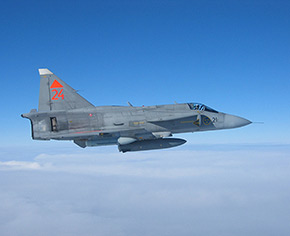
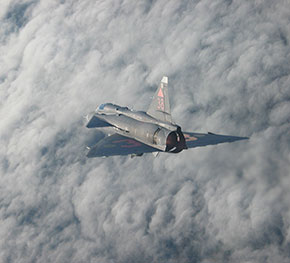
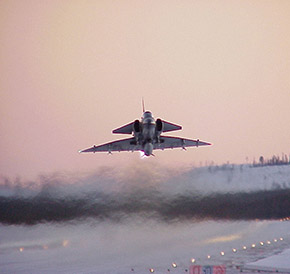
 Back to Index
Back to Index